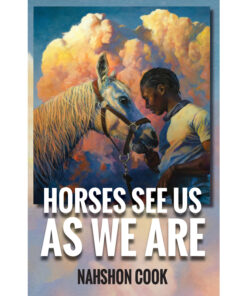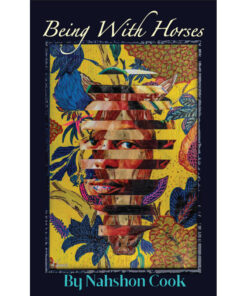Total Horsemanship by Jean Claude Racinet
$32.95
2 in stock (can be backordered)
Product Description
This book outlines and explains the concept of “riding in lightness” as understood by Jean-Claude Racinet who has spent his life riding and teaching the French School of horsemanship.
Born in Paris in 1929, Jean-Claude Racinet is a graduate of St. Cyr, the French West Point, Class of 1950. He was a member of the French contingent in Korea (1950-53), where he was wounded twice. As an officer of the French army, he spent seven years in Tunisia and Algeria (1954-61) and four more years in Europe.
While he spent most of his army career during the time when the military was getting rid of their horses, he managed, between and during his sojourns overseas, to successfully attend the Superior Equitation Course in the Cavalry School of Saumur (1953-54), winning the title of Champion of Tunisia in open jumping (1956), and to become a member of the Jumping Team of the Military School in Paris (1953).
Riding teacher and trainer as a civilian after 9165, he was more particularly known by his retraining of difficult horses and later as an equestrian journalist by his always witty and sometimes scathing articles in the French equestrian monthly L’Information Hippique.
In the United States since 1983, Jean-Claude Racinet became a successful teacher, trainer, lecturer, clinician, and author. Xenophon Press published in 1994 his highly popular book Another Horsemanship, now in its second printing.
Jean-Claude Racinet has devoted his life to the vindication of “L’equitation de Legerete” (riding in lightness), which fosters balance by relaxing the horse – more so his mouth – excluding force in the wielding of the aids. In fact, the very essence of riding in the French Classical tradition.
(softcover, photos, 135 pgs.)
Excerpt from the book:
From a rider’s point of view, two distinct muscular functions preside over the equestrian performance. The first function assures locomotion. It Is acted out through an alternation of extensions and contractions.
The second function must establish favorable articular angles and provide a fulcrum to the action of the muscles in charge of the first function. It upholds the structure. In one word, it assures the “posture.” This second function works through a steady muscular tension.
It is obvious that the muscles affected by the first function, which requires an intermittent tension, cannot in the meantime fulfill the second function, which requires a steady tension. Therefore the two muscle sets affected by either function are, at any given time, totally distinct. Their definition is, however, blurred, since in plain, day-to-day riding, at a walk or at a gallop or over the jumps, the posture constantly changes.
At a trot, however, the posture is steady; the head position as well as the angle of the pelvis is pretty constant. At a trot, even at a racing trot, the horse’s body is, so to say, “gelled”; its form does not change.
1 review for Total Horsemanship by Jean Claude Racinet
You must be logged in to post a review.
Related products
-

Ride with Feel: A Guide for the Rest of Us by Katrin Silva
0 out of 5$19.00Brands:Katrin SilvaRead more -

Another Horsemanship by Jean-Claude Racinet
5.00 out of 5$29.95Brands:Jean Claude RacinetAdd to cart -


Horses See Us As We Are by Nahshon Cook
0 out of 5$24.95Brands:Nahshon CookRead more -


Being with Horses By Nahshon Cook
5.00 out of 5$24.95Brands:Nahshon CookAdd to cart -

Collection or Contortion: The Anatomy and Biomechanics of Positioning and Bending by Gerd Heuschman DVM
0 out of 5$40.00Brands:Dr Gerd HeuschmannAdd to cart




Sandy Hushagen –
This book is well done and uses language which is easy to follow. Racinet presents some interesting thoughts on riding and working horses in consideration of their physiology. He does so in a straightforward and clear way. I found it a thought provoking book which clarified some of my ideas and challenged others. He doesn’t hesitate to offer (& substantiate) his view which makes the book well worth reading.